Category Archives: Cormorant
A beautiful orange cormorant
Usually, Little Pied Cormorants have bright white and shiny black feathers. This one, though, has a lovely burnished orange head and chest. This is probably due to staining from natural iron deposits in the water.


Here’s a short video, showing the back of the bird’s head with a neat black stripe between the orange feathers of the bird’s face:
Common name: Little Pied Cormorant
Scientific name: Phalacrocorax melanoleucos
Approximate length: 60 cm
Date spotted: 20 January 2025 (summer)
Location: Manly Dam, Allambie Heights, New South Wales, Australia: 33°46’35.1″S 151°14’48.5″E
Looking great!
These two Great Cormorants were chilling at Manly Dam, in Sydney’s Northern Beaches. I didn’t realise how pretty their wing feathers are until I saw them through the camera zoom.
The first bird’s image is slightly spoiled by the bit of fluff on its nose, but check out those clear turquoise eyes and white-and-yellow face markings:
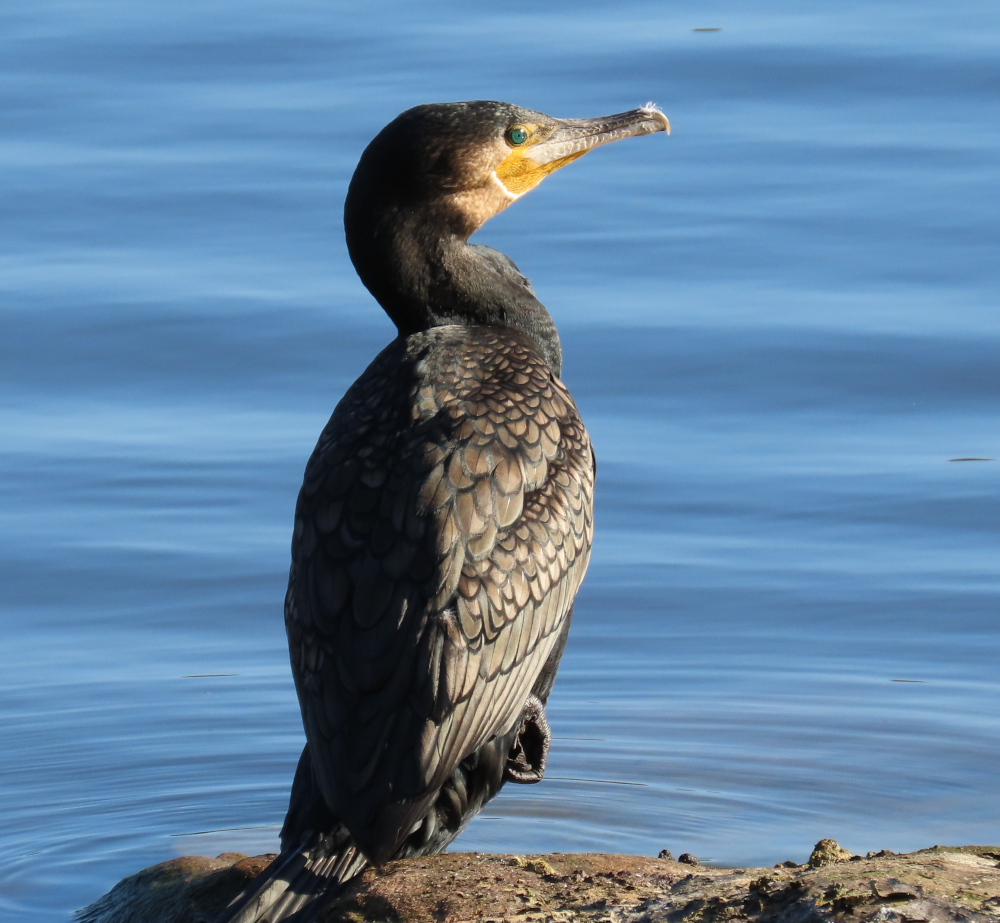
The second bird has no fluff problems, and stands proud:
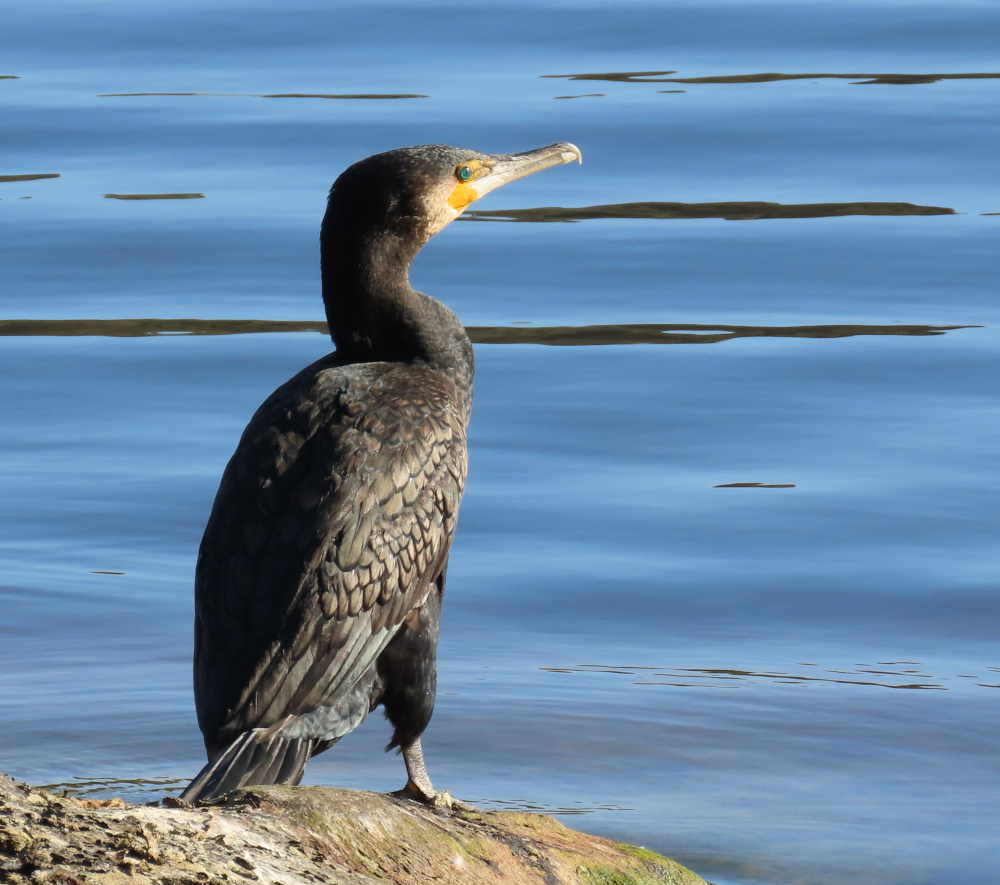
Common name: Great Cormorant
Scientific name: Phalacrocorax carbo
Approximate length: 85 cm; wing span 1.5 m
Date spotted: 6 September 2024 (spring)
Location: Manly Dam, New South Wales, Australia: 33°46’34.5″S 151°14’50.5″E
Pied Cormorant: first sighting!
Cormorants and other water birds seem to be my thing at the moment! This is the first time I’ve spotted a Pied Cormorant:

Pied Cormorants look quite similar to Little Pied Cormorants, of which I’ve seen a few. Here’s a Little Pied from an earlier post of mine:

The Pied Cormorants are bigger, and they don’t have that endearing tuft of feathers on their heads. They also have a bright yellow patch on the inside of each eye, which the Little Pied Cormorants lack.
There are five types of cormorants to be found in south eastern Australia. I’ve now sighted four of the five! Just the Black-faced Cormorant still to go.
The Pied Cormorant was on a rock on the edge of the walkway that leads from Manly Beach to Shelly Beach. It’s quite a busy scene, with walkers, canoeists, and swimmers enjoying the water. The cormorant calmly watches the world go by:
Common name: Pied Cormorant
Scientific name: Phalacrocorax varius
Approximate length: 70-80 cm
Date spotted: 5 May 2024 (autumn)
Location: Marine Parade, Shelly Beach, Manly, New South Wales, Australia: 33°48’02.6″S 151°17’46.9″E
Now to spot a Black-faced Cormorant!
Little Black Cormorants in a row
A few days ago, at Forty Baskets Beach on Sydney’s Northern Beaches, seven Little Black Cormorants swam, fished, and sunned themselves.
Little Blacks are easy to distinguish from other types of cormorant in this area of Australia. Apart from being entirely black, they have green-blue eyes that can look quite eery at times.
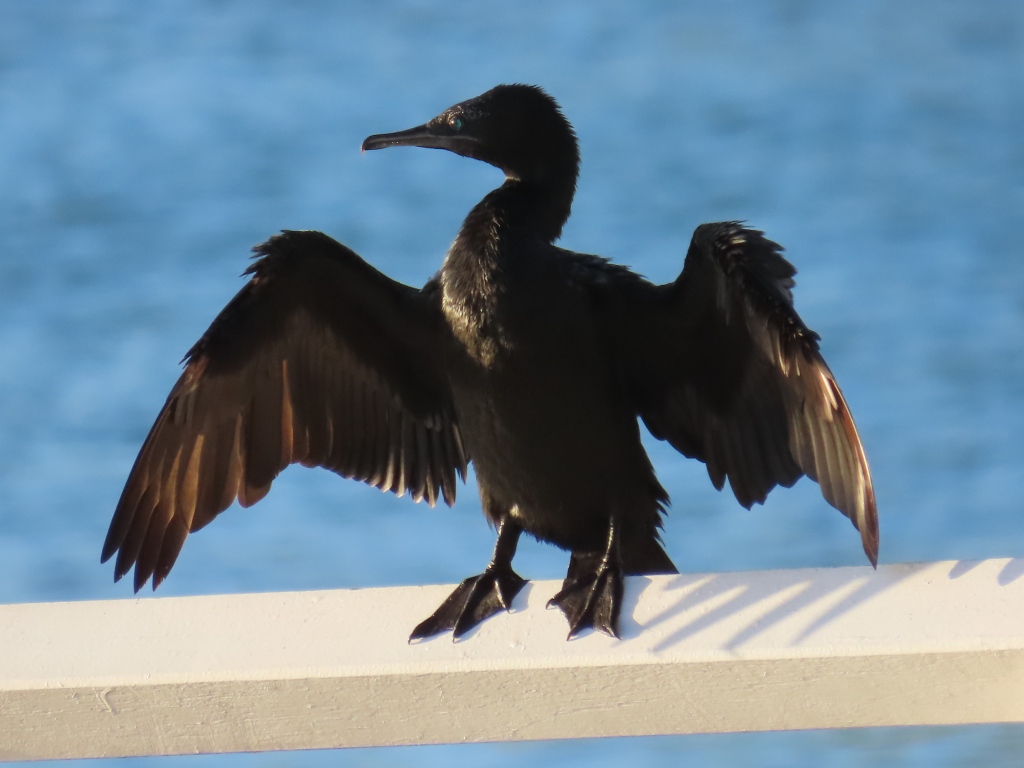
Here are six of the seven Little Black Cormorants, hanging their wings out to dry:

The group stayed together most of the time, both in and out of the water.

Here’s another of the birds showing that pretty blue eye.

Common name: Little Black Cormorant (see other cormorants)
Scientific name: Phalacrocorax sulcirostris
Approximate length: 65 cm
Date spotted: 25 April 2024 (autumn)
Location: Forty Baskets Beach, New South Wales, Australia: 33°48’12.6″S 151°16’12.2″E
Interestingly, a White-faced Heron and a few Silver Gulls followed the cormorants around.
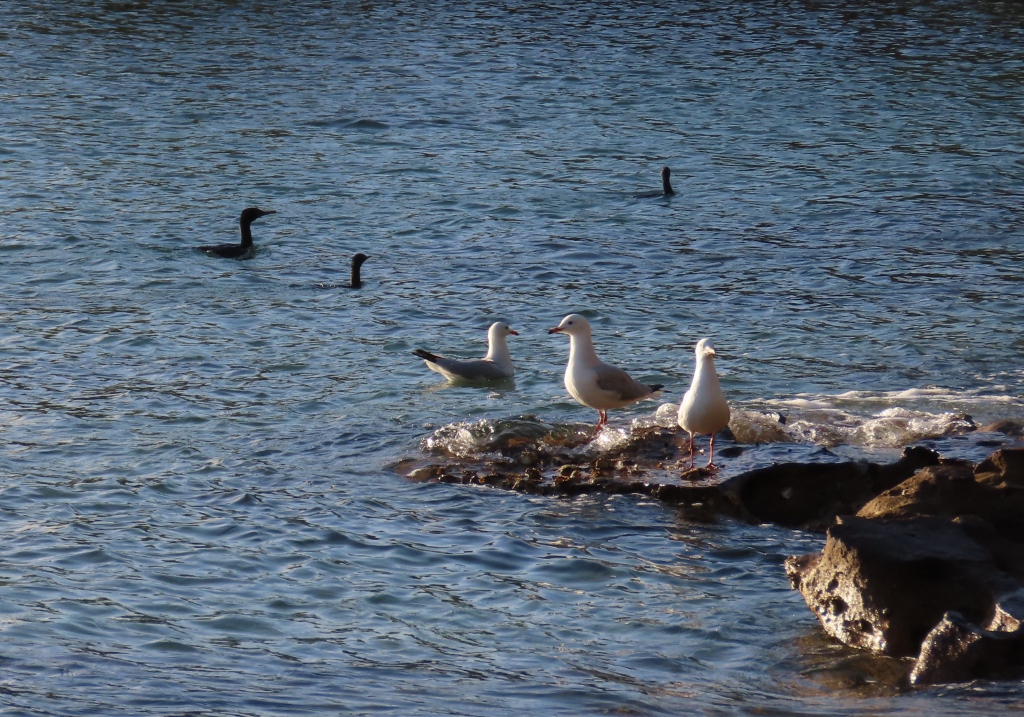
I guess they were interested in any fish that the cormorants might find!

Here’s a better picture of the heron:

Little Pied Cormorant on honeycomb rock
Little Pied Cormorants are quite common in the waters around Sydney. Most often, you see them from afar, and they just look like another black and white bird. But when you see them through the camera zoom, they’re rather cute. They have big floppy black feet, a Tintin-like hairstyle, and a goofy smile:

Their tail is short and stubby, and seems to be useful in preventing them from teetering over backwards. That tuft of black hair extends down the back of their necks, adding a touch of sophistication:
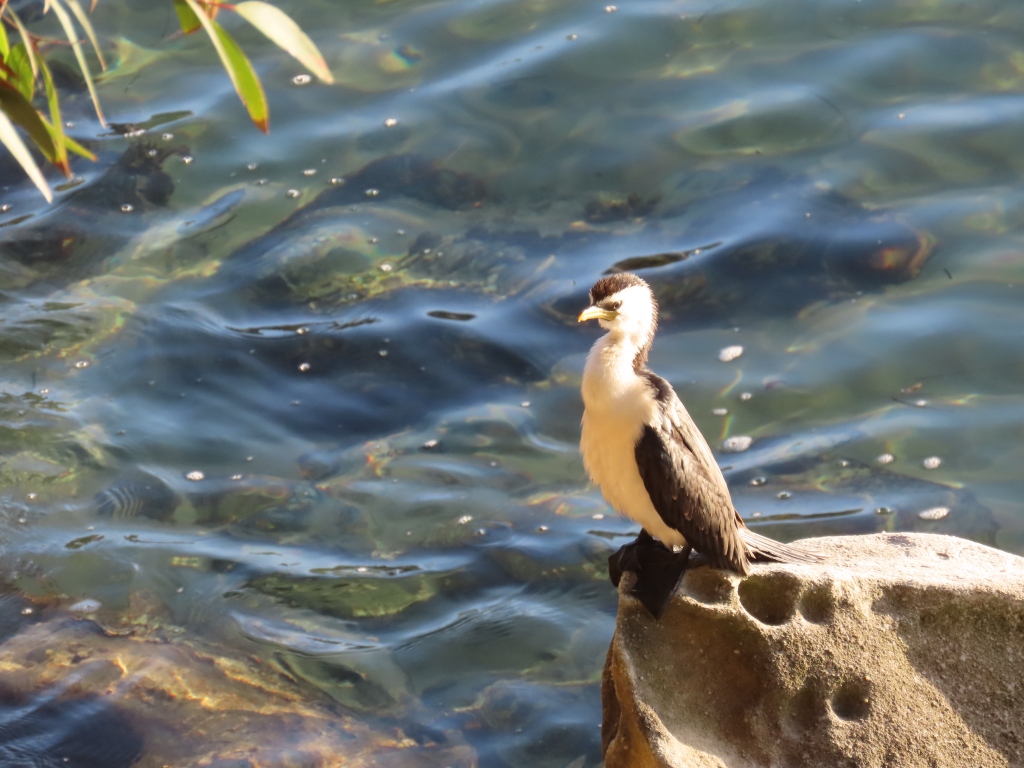
The rock that this cormorant is sitting on has attractive honeycomb weathering patterns:

In this video, the cormorant is stretching its neck and gulping to help its latest meal go down.
Common name: Little Pied Cormorant
Scientific name: Phalacrocorax melanoleucos
Approximate length: 60 cm
Date spotted: 25 February 2024 (summer)
Location: North Harbour Walk, Sydney Harbour, New South Wales, Australia: 33°48’05.9″S 151°16’10.1″E
Little Black Cormorant swimming underwater
Today I managed to catch some footage of a Little Black Cormorant swimming in a quiet offshoot of the Hawkesbury River.
We were at Akuna Bay in the Ku-ring-gai Chase National Park. The bay is home to a marina, with boats and jetties and restaurants, yet it was quiet and peaceful when we were there.
This is a still shot of the cormorant under the water:

Little Black Cormorants are one of five types of cormorants found in Eastern Australia. I don’t have many photos of them yet. As well as being entirely black, Little Black Cormorants are distinguishable by their bright green eyes. The next photo gives some idea of the eye colour, though it’s rather blurry:

Common name: Little Black Cormorant (see other cormorants)
Scientific name: Phalacrocorax sulcirostris
Approximate length: 65 cm
Date spotted: 29 December 2023 (summer)
Location: Ku-ring-gai Chase National Park, New South Wales, Australia: 33°38’46.1″S 151°14’04.9″E
The creek was still and smooth. A haven for mosquitoes, alas, but pretty too:
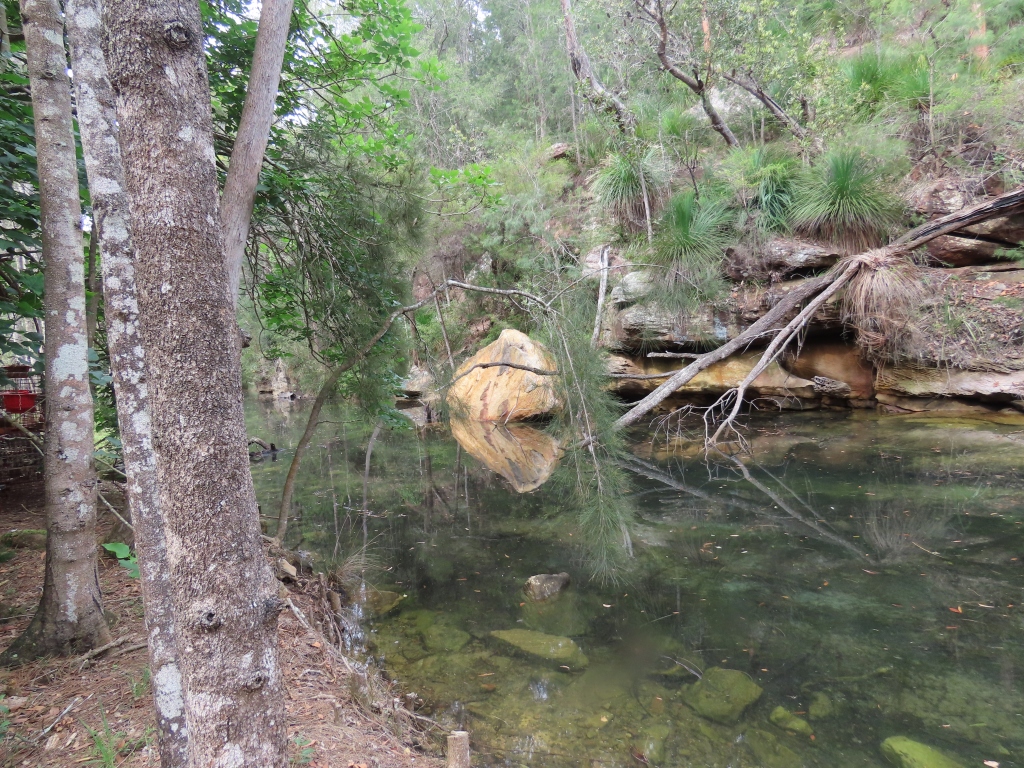
Here’s a rare picture of me examining another part of the creek:

Great Cormorant reflections at Manly Dam
In the early morning, a Great Cormorant holds its wings up to dry:

The cormorant waves its wings gently in the still air. Every now and then, it turns to check the noisy Australian Ravens in the background. As I approach along the path, the cormorant decides to take off and head for a safer spot further up the dam:
Common name: Great Cormorant
Scientific name: Phalacrocorax carbo
Approximate length: 85 cm; wing span 1.5 m
Date spotted: 19 November 2022 (spring)
Location: Manly Dam, New South Wales, Australia: 33°46’34.5″S 151°14’50.5″E
Crowned Cormorants on Melkbosstrand, South Africa
I’m in the Western Cape, South Africa, for a few days. On my early morning stroll along the beach at Melkbosstrand, I pass a cluster of rocks called Slabbert Se Klippe. This is where the Crowned Cormorants hang out!
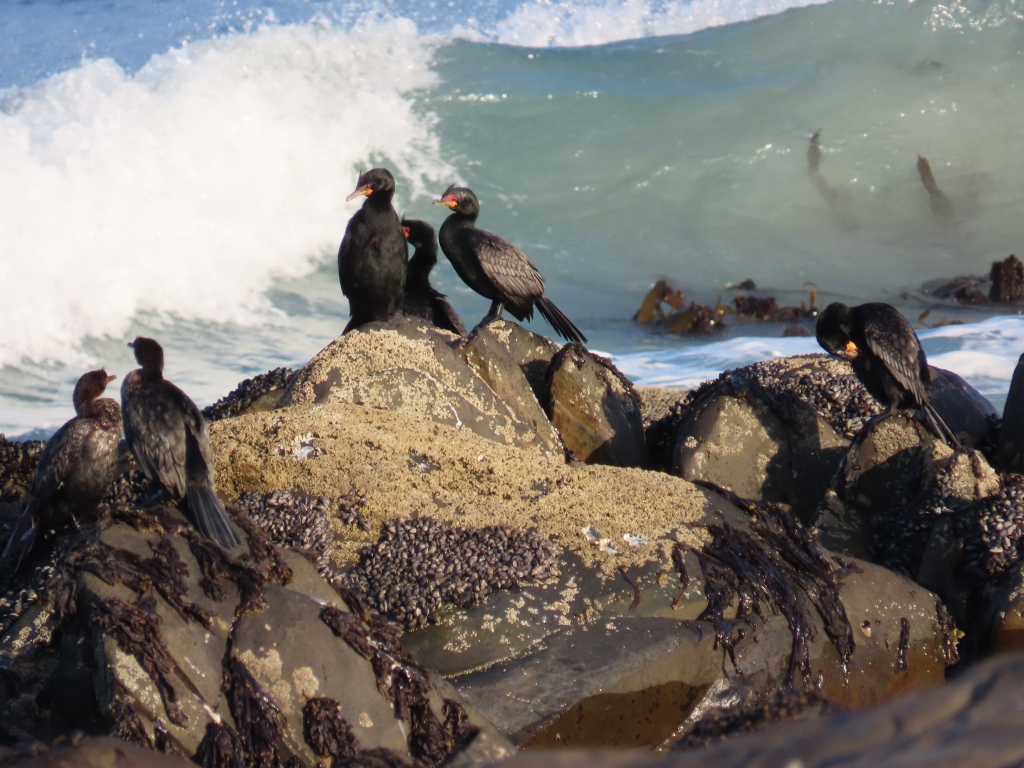
It’s interesting to compare these South African cormorants with the cormorants that I’ve spotted around Sydney.
Birds from a boat on the Daintree River
In May this year I was lucky enough to visit Far North Queensland. While there, I took an early morning boat trip on the Daintree River (map). The tour, run by Ian “Sauce” Worcester, was called the Daintree River Wild Watch. Highly recommended!
The river is gorgeous in the early morning chill:
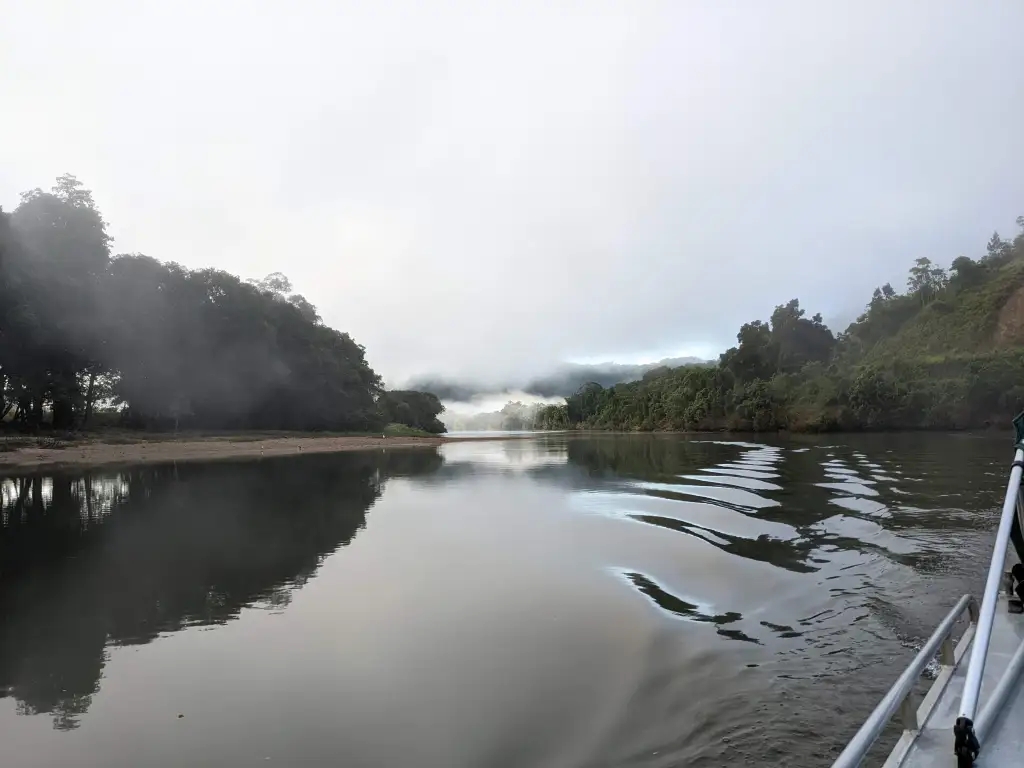
We saw a number of kingfishers on the banks of the river. This one is a Sacred Kingfisher:
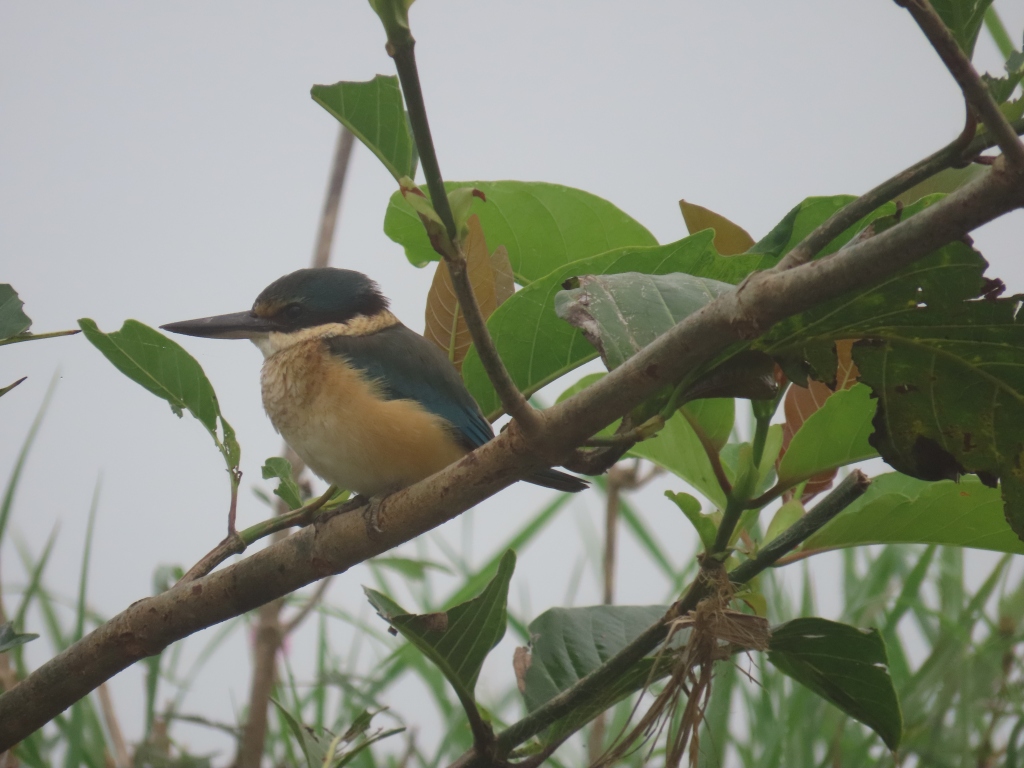
Another Sacred Kingfisher:

A Spectacled Monarch hid in the undergrowth of the mangrove forest. Our boat followed it quietly until it came into easy view:
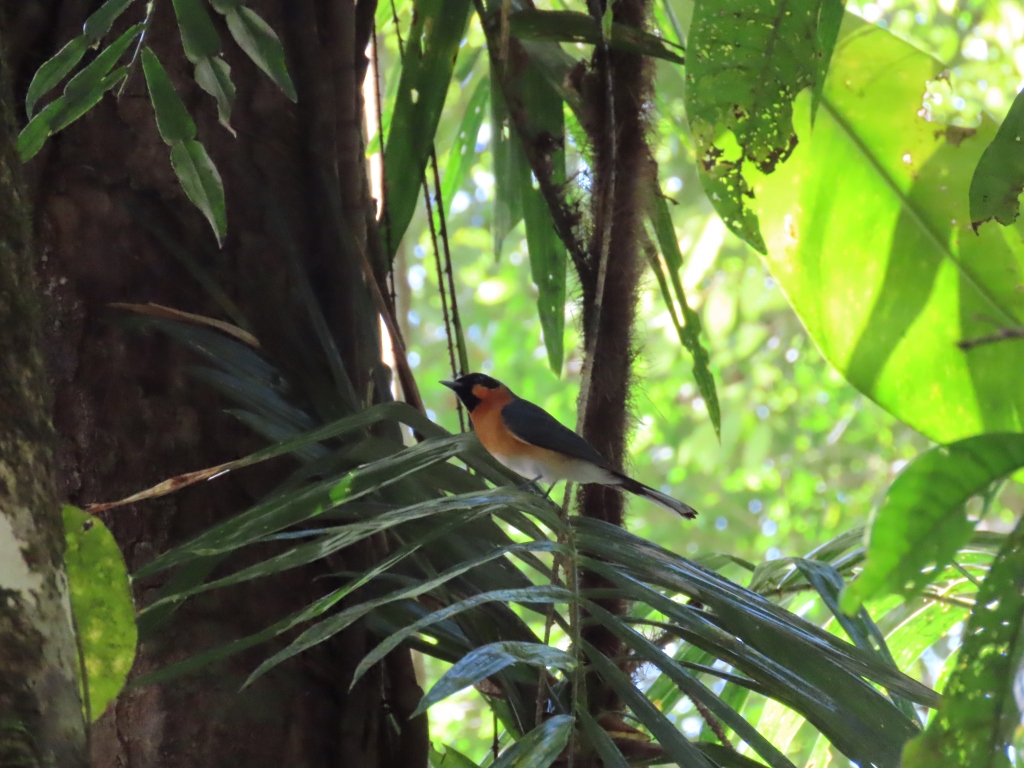
As the sun came up, a Rainbow Bee-eater landed on a high-up tree branch and fluffed out its feathers to take advantage of the warmth:
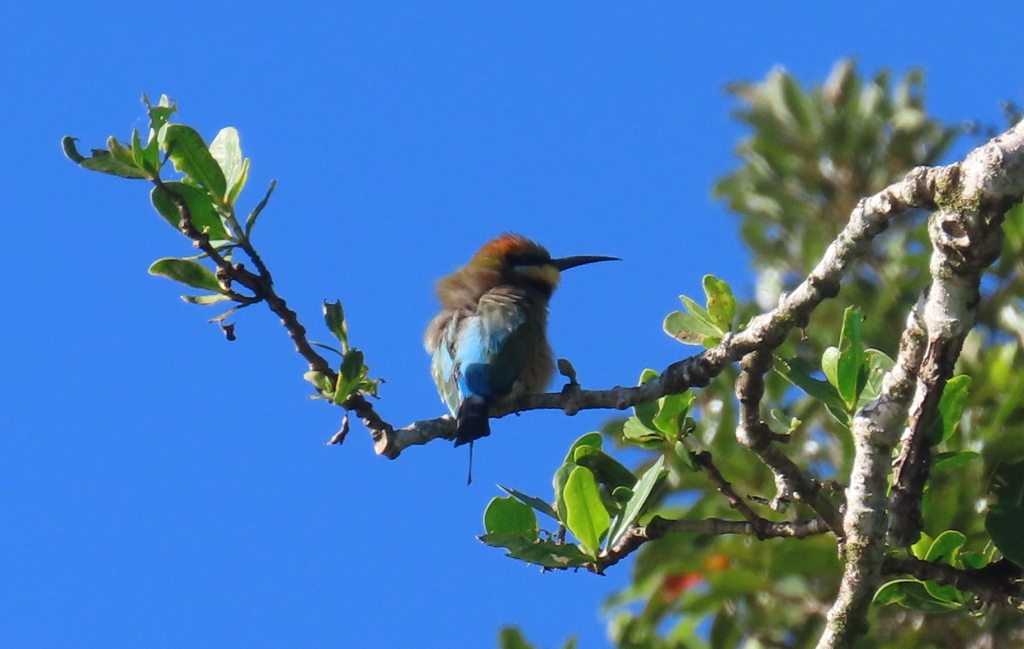
Here’s another view of the Rainbow Bee-eater:
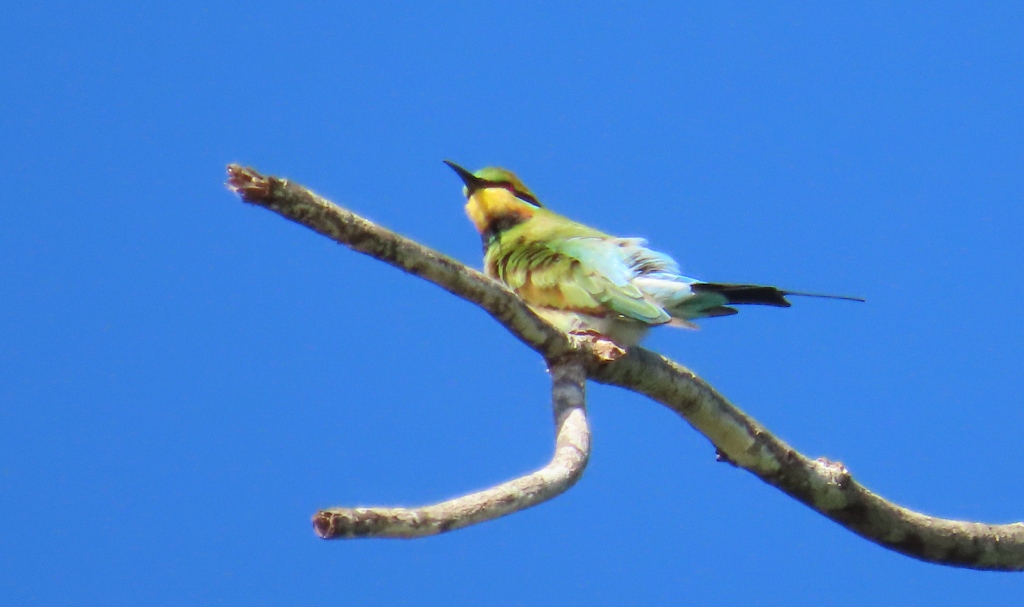
The river banks were at times covered in mangrove forests or fig trees. High above our heads, flowers bloomed:
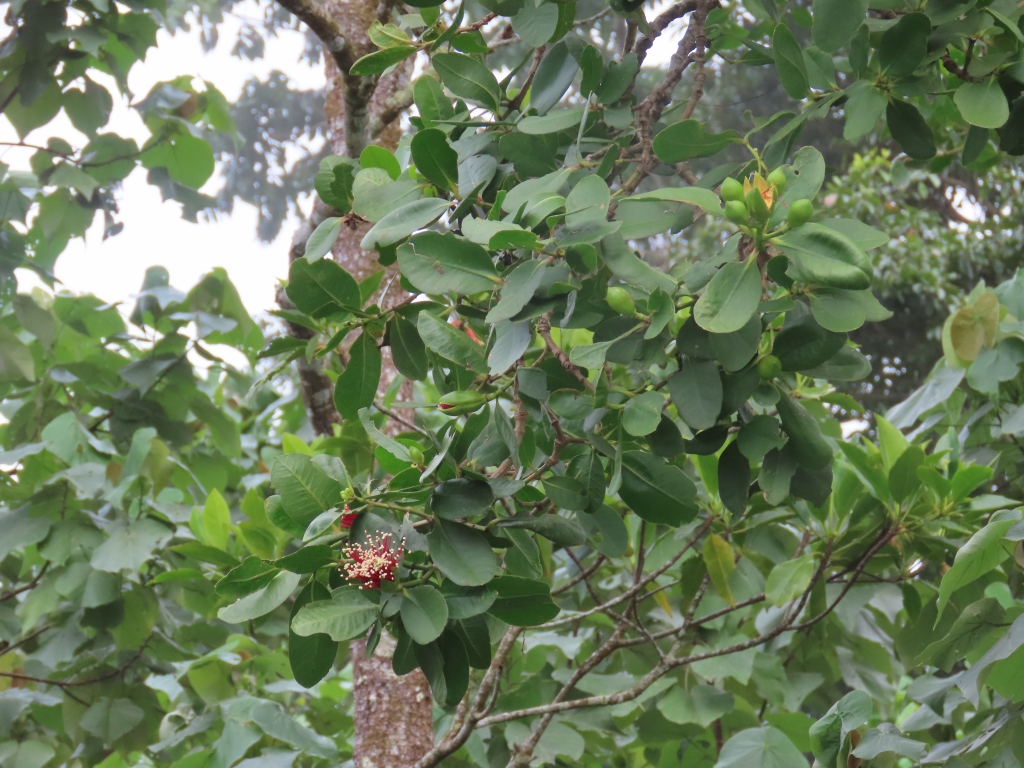
Waterbirds included these colourful Radjah Shelducks, sometimes called Burdekin ducks:

Another non-descript-looking duck caused some excitement, as our tour guide thought it might be a whistling duck but I can’t identify it. If anyone can say what it is, let me know:
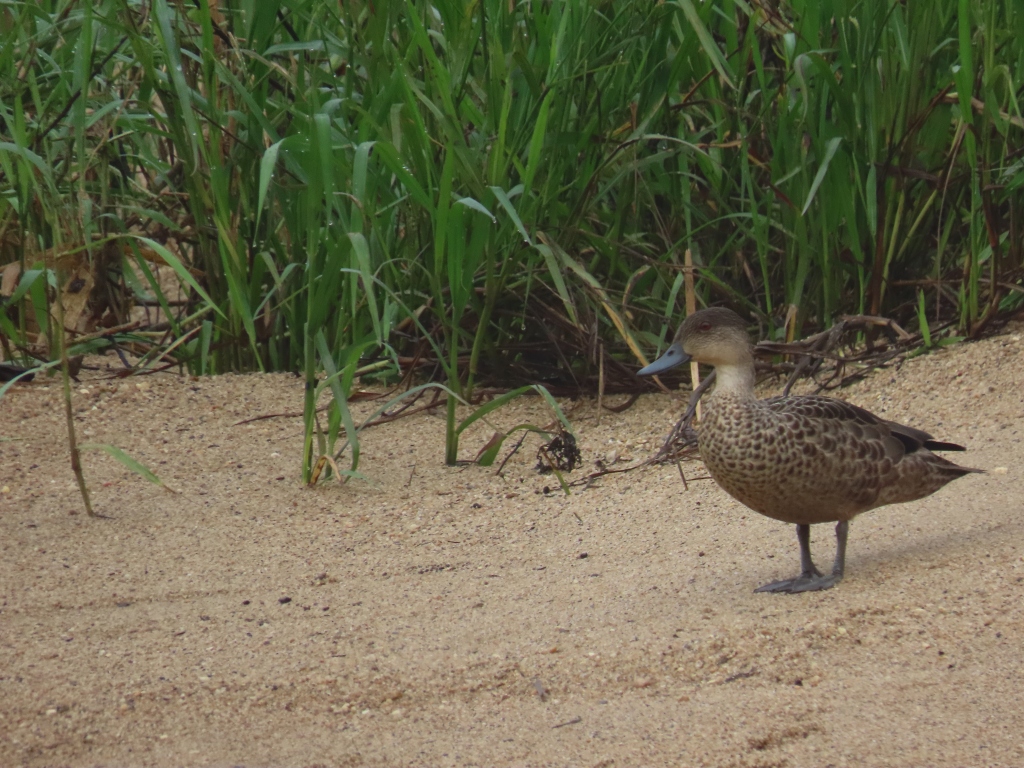
We saw a Darter roosting close to a Little Pied Cormorant. In this photo, the cormorant is behind the darter looking towards the right. The darter is in front, with its back to us, looking towards the left:
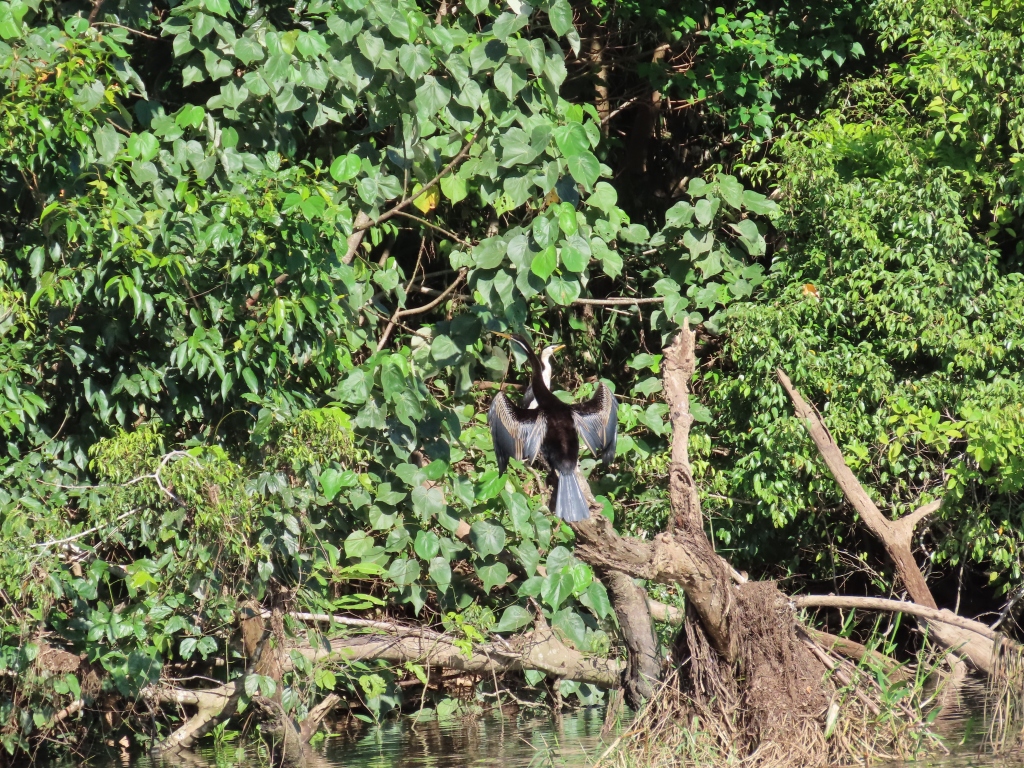
Three Little Pied Cormorants kept us company on the water. You can see the dense forest that covered much of the river bank:

An egret kept pace for a while too:
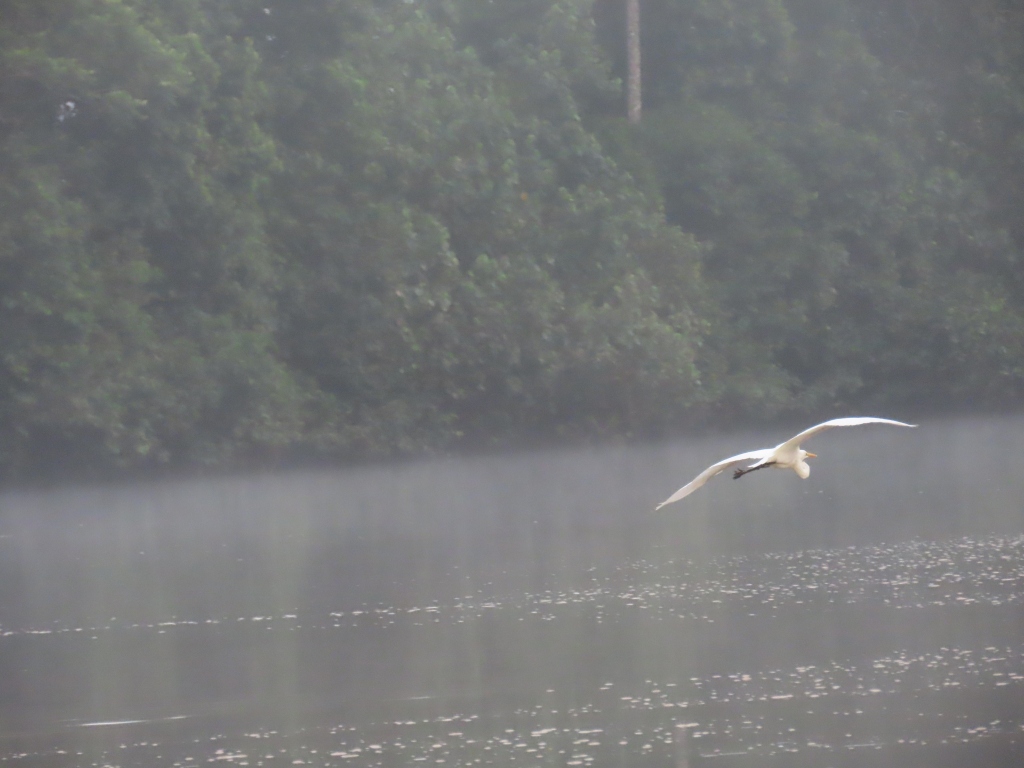
Cormorant with view of Bantry Bay
This morning I went for a long walk along one side of Bantry Bay, an inlet of Sydney harbour. The area is in the lovely Garigal National Park. Along the way, I spotted this Little Pied Cormorant:
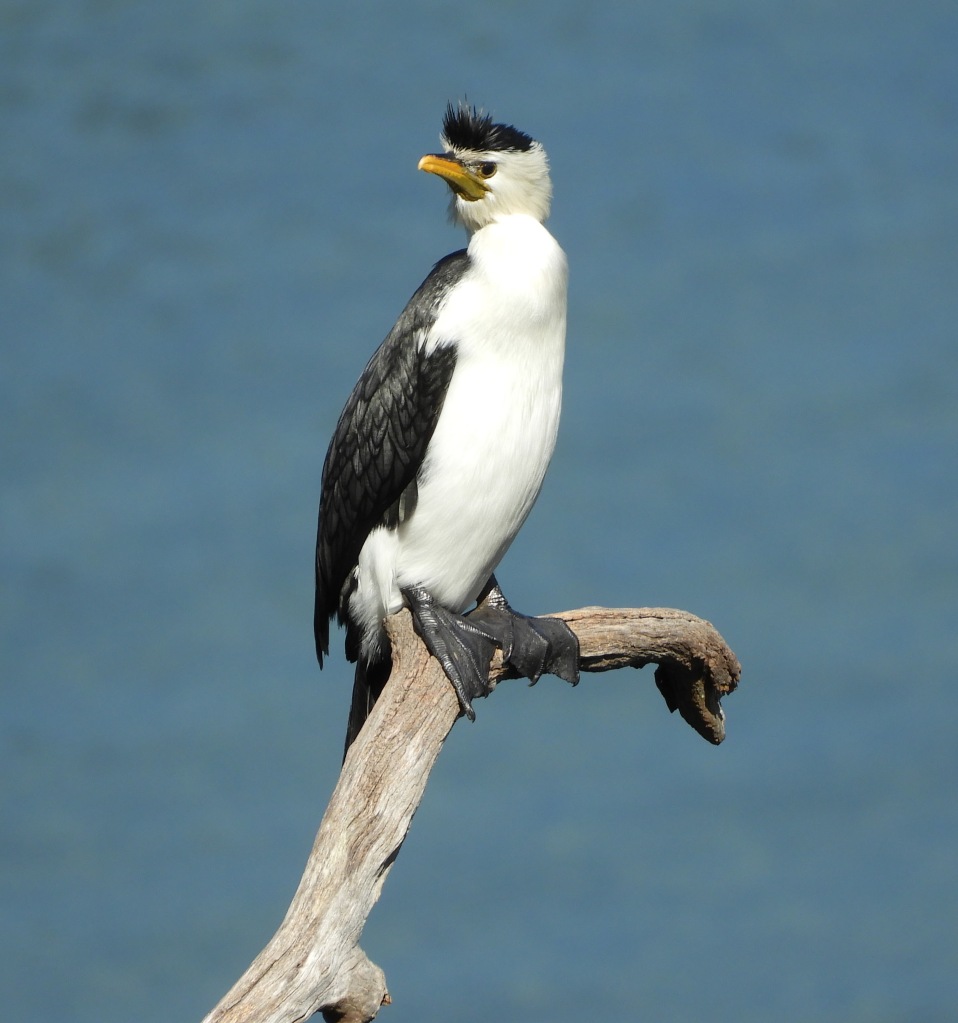
The bird had chosen a perch with a stunning view of Bantry Bay. Here’s a zoomed out picture of the bird on its skeleton-tree perch (the bird is at the end of the bottom branch on the right), with the clear water and mangroves of Bantry bay, and couple of canoeists in the distance:
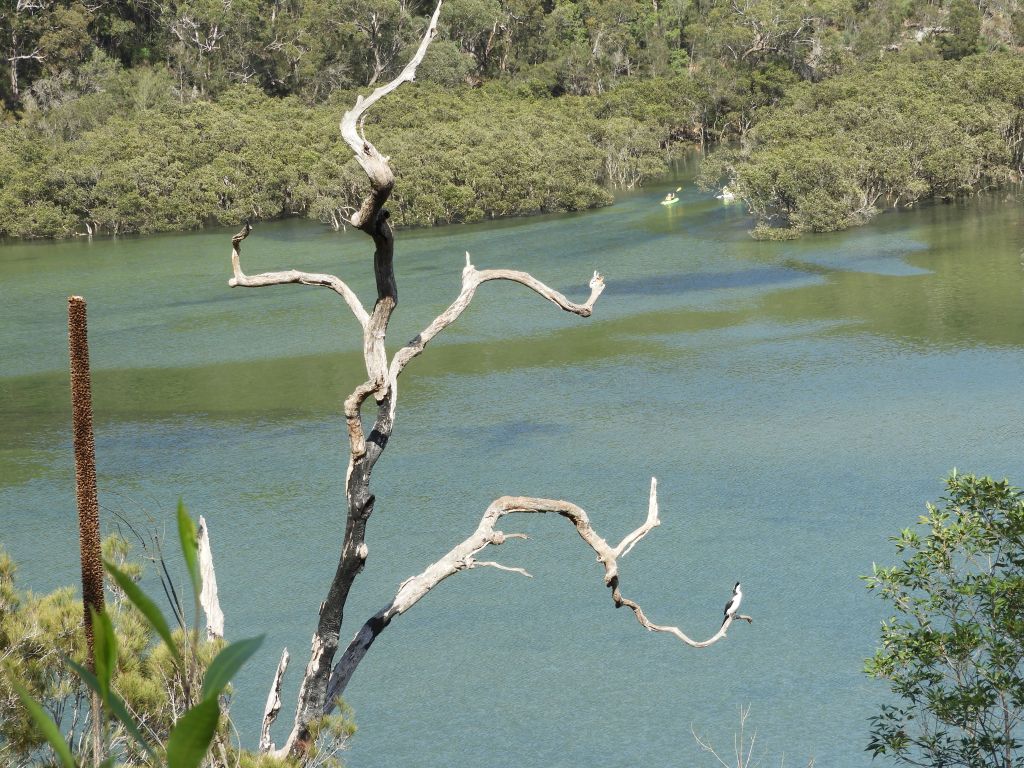
The next picture shows more of the view, following the bay inland:

Here’s a view of the bay taken (on another day) from The Bluff, the highest point overlooking the water:
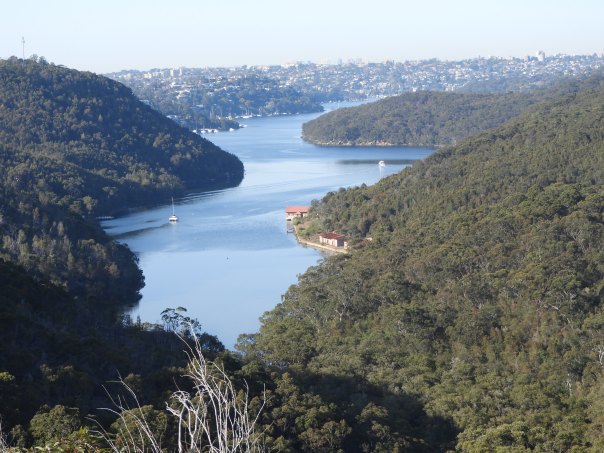
Common name: Little Pied Cormorant
Scientific name: Phalacrocorax melanoleucos
Approximate length: 60 cm
Date spotted: 4 October 2020 (spring)
Location: The Bluff Track, Middle Harbour, New South Wales, Australia: 33°46’23.9″S 151°13’52.8″E








